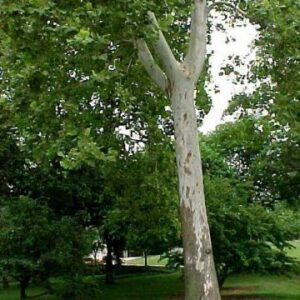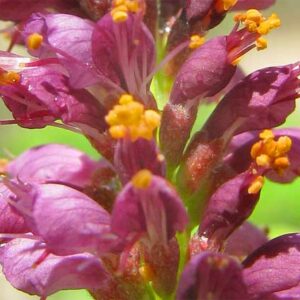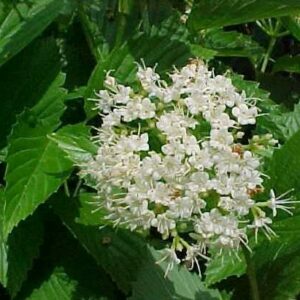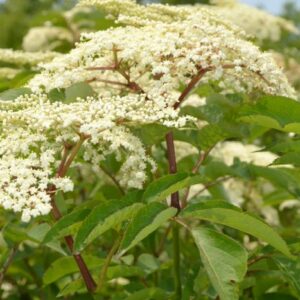American Elderberry (Sambucus canadensis)
$30.00
Out of stock
Share
Description
Culture
Grow in medium to wet, well-drained soils in full sun to part shade. Tolerates a wide range of soils, but prefers moist, humusy ones. Spreads by root suckers to form colonies. Prune suckers as they appear unless naturalizing. A large number of late winter pruning options include (a) pruning out dead or weakened stems, (b) shortening one year stems or (c) cutting back to the ground to rejuvenate. Some horticulturists recommend a hard spring pruning for maintaining best foliage and habit.
Noteworthy Characteristics
Sambucus canadensis, commonly called American elder, is native to eastern North America. It is a deciduous, somewhat sprawling, suckering shrub that typically grows to 5-12’ tall. It typically occurs on streambanks, moist woodlands, thickets, fence rows and roadsides throughout the State of Missouri. Tiny lemon-scented white flowers appear in large flat-topped clusters (cymes to 10” across) in June. Flowers give way to clusters of black elderberry fruits (drupes) in late summer. Fruits of species plants are sometimes used to make jams, jellies, pie filings and elderberry wine. Fruits are attractive to wildlife. American elder (Sambucus canadensis) and European elder (Sambucus nigra) are closely related plants. The Royal Horticultural Society currently lists American elder as Sambucus nigra var. canadensis.
Genus name comes from the Latin name, perhaps connected with sambuca a kind of harp.
Specific epithet means of Canada.
Problems
No serious insect or disease problems. Some susceptibility to canker, powdery mildew, leaf spot, borers, spider mites and aphids. Branches are susceptible to damage from high winds or from heavy snow/ice in winter. Plants will spread by root suckers.
Garden Uses
Group or mass in naturalized areas where suckering spread may be appreciated. Attractive flowers and interesting fruits. Landscape specimen, shrub borders, screens, backgrounds, stream/pond peripheries or low spots. Good sprawling hedge.
Related products
-

Persimmon (Diospyros virginiana)
$30.00 Out of Stock -

Sycamore (Platinus occidentalis)
$30.00 – $90.00 Select options This product has multiple variants. The options may be chosen on the product page -

False Indigo (Amorpha fruticosa)
$30.00 – $60.00 Select options This product has multiple variants. The options may be chosen on the product page -

Arrowwood Viburnum (Viburnum dentatum)
$30.00 Out of Stock


